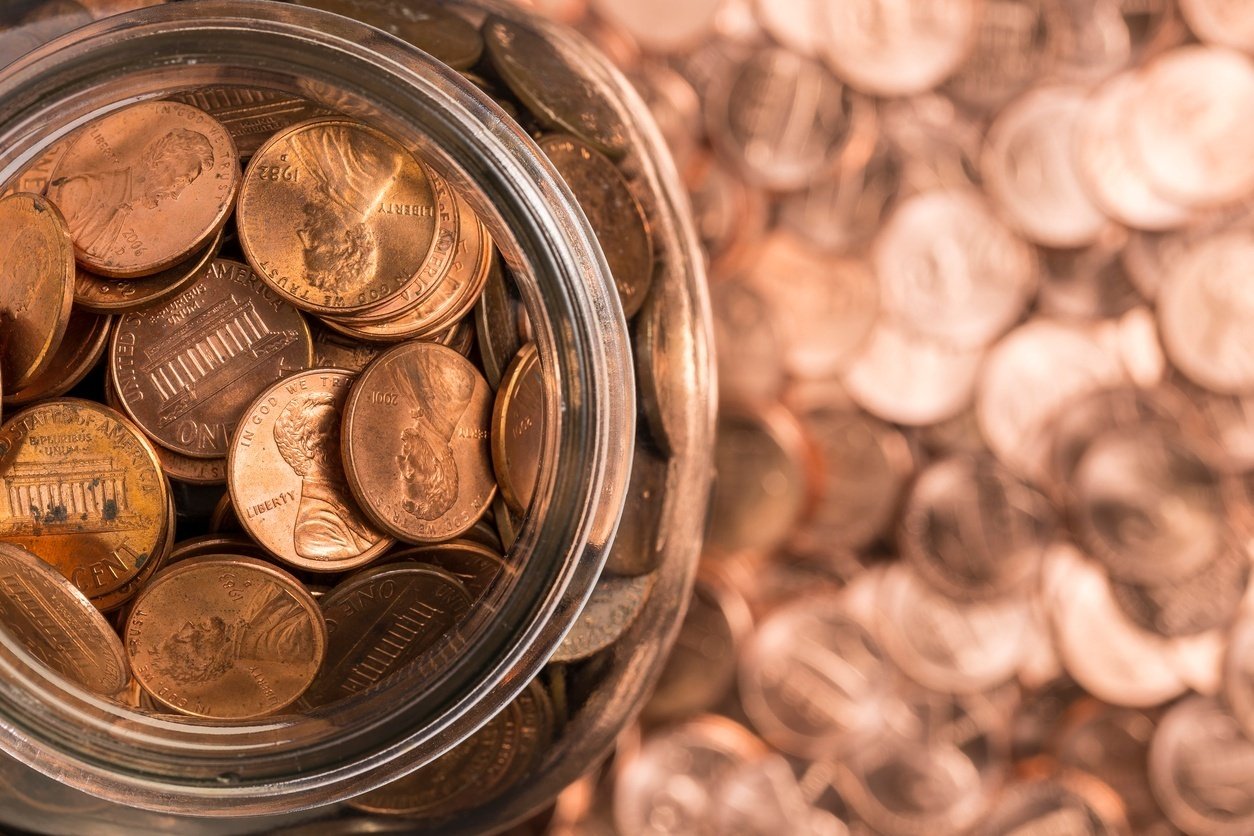The ever wise and philosophical Benjamin Franklin had advice about our smallest denomination of currency: “A penny saved is a penny earned.’’ But even he might be surprised how quickly that single penny can add up to serious savings. One penny saved can lead to nearly $700 in the course of a year. Here’s how you do it:
The website Wallet Hacks calls it a "penny challenge." On January 1st, put a penny in a jar. Double that to two cents on January 2nd. Keep doubling the amount each day. Within six months, your total will reach $166.53. And by December 31 — pop the champagne! — you'll have saved $667.95!
But for some, the “penny challenge’’ refers to the dilemma faced by continuing to produce the one-cent coin. The coin costs more than its face value to produce, but has enduring popularity and historical significance.
As with most issues today, public opinion is split, and bolstered by Web sites on both sides of the discussion. Retirethepenny.com calls for the penny to be abolished, claiming that, counterintuitive as it might seem, the coins harm the economy.
According to the U.S. Mint's 2014 annual report, the current cost of a penny is 1.7 cents per coin. With nearly 8 billion pennies minted in 2014, the U.S. spent almost $132 million to produce less than $50 million of circulating currency. When production cost is added to the opportunity cost of using the penny, economists say that the penny drains almost $900 million from the national economy every year.
In Canada, the penny was abolished in 2013. Instead, transactions are rounded up.
But not everyone thinks this decision makes "cents."
The majority of Americans want to keep the penny. A poll conducted by Americans for Common Cents found over two-thirds (68%) of those surveyed favor keeping the penny in circulation and a 2015 Harris poll showed that support for keeping pennies in circulation is on the rise. So the penny is here to stay, at least for now.
One reason may be sentimental. Perhaps inspired by the lyrics to “Pennies from Heaven,’’ which include the line, “Don’t you know each cloud contains pennies from heaven,’’ many people associate pennies with good luck and greetings from deceased loved ones.
“Whenever I see a penny, I think of my late father and my two beloved aunts,’’ said one woman we spoke with. “It always makes me smile.’’
“I still have a container full of wheat pennies that my father used to collect,’’ another person said.
Others earmark their pennies for specific goals. “I save them all year and use the total for stocking stuffers at Christmas,’’ one penny fan reported.
Here’s some additional trivia to keep you pennywise:
The first penny was minted by, you guessed it, Ben Franklin. But the penny we now use, featuring a bust of Abraham Lincoln, was minted Feb. 12, 1909, to honor the 100th anniversary of Lincoln’s birth.
Feb. 12 is a big day for pennies. Lincoln’s birthday has been unofficially designated as Lost Penny Day. The observance, which is not official, was created by Adrienne Sioux Koopersmith, who encourages people to search their cars, couches and other potential hiding spots for long-lost pennies.
“Petty change can make an astounding difference,’’ she writes.
Pennies can often be found on gravestones, a token of remembrance, a sign that visitors have paid their respects.
The final resting place of beloved penny-saving advocate Benjamin Franklin is still being pelted by pennies — but it’s done with affection.
The Christ Church Preservation Trust says the simple marble ledger tablet has developed a significant crack on top of the pitting caused by the tens of thousands of pennies tossed onto the marker annually in tribute to Franklin. The pennies are donated to charity.
A campaign to raise $10,000 to save Benjamin Franklin's gravestone at the Christ Church Burial Ground across from Independence Mall has surpassed its goal thanks in large part to a $5,000 contribution from rocker Jon Bon Jovi and his wife, Dorothea. (We were hoping for Lionel Richie, singer and co-author of “Penny Lover.’’)
Whether you love pennies or merely tolerate them, you can definitely make use of them. Transforming loose pennies into cold, hard cash is yet another benefit offered to Hanscom Federal Credit Union members.
You can find coin counting machines at the following branch locations:
- Main Office (Hanscom AFB)
- Bedford Financial Center (Bedford Branch)
- Devens Branch
- JFK Branch
- McLean, VA Branch
- O'Neill Branch
- Burlington Branch
- Natick Branch
- Barnes Branch
- Billerica Branch
- Littleton Branch
The coin counting machines are a free service for members of Hanscom FCU. Non-members will be subject to a service fee of 10% of the amount counted.
Indeed, Ben Franklin would be pleased you made such a wise decision with your pennies.










Comment